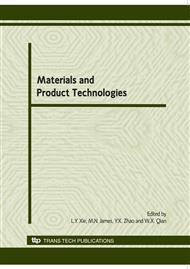p.645
p.650
p.655
p.660
p.665
p.670
p.675
p.681
p.686
Design of an Oblique Tool for the Nano Removal Process
Abstract:
A system design for a recycling process for the nano removal of the indium tin oxide (ITO) nanostructure from the color filter surface of TFT-LCD displays is presented. The low yield rate of ITO thin-films is well known in semiconductor production processes. By establishing a recycling process for the ultra-precise removal of the thin-film nanostructure, the optoelectronic semiconductor industry can effectively recycle defective products with a reduction of both production costs and pollution. In the current experiment, the major interest lies in the features of the technology and the design of an oblique cathode for the electrochemical removal process. For this process a steep gradient of the oblique cathode provides large discharge mobility and a better removal effect. A thin oblique cathode, a small gap-width between the cathode and the ITO surface, or a high flow rate of electrolyte corresponds to a higher removal rate of the ITO-layer. A large current flow combined with a high feed rate of the display also results in a fast removal rate.
Info:
Periodical:
Pages:
665-669
Citation:
Online since:
June 2010
Authors:
Keywords:
Price:
Сopyright:
© 2010 Trans Tech Publications Ltd. All Rights Reserved
Share:
Citation:


